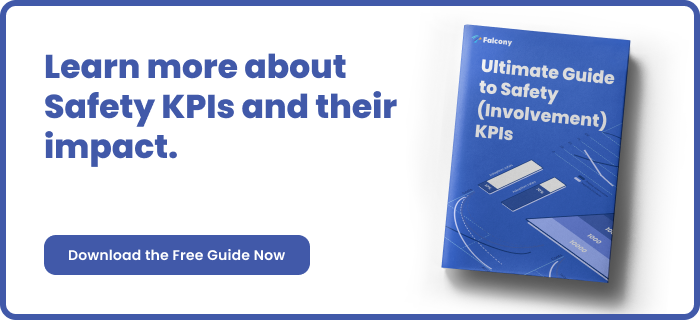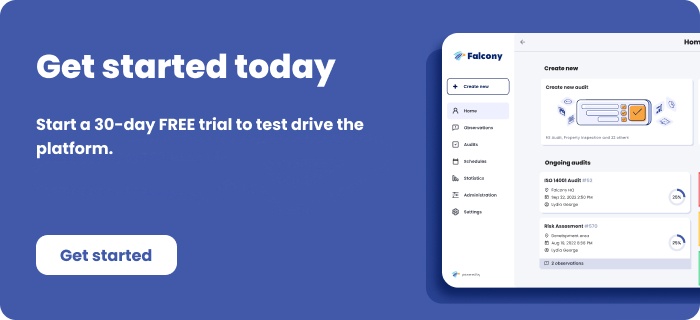Workplace Safety 101 - Slips, Trips and Falls
Slips, trips, and falls remain one of the most common causes of workplace injuries.
Despite advances in health and safety regulations, these incidents still account for a significant percentage of accidents across various industries. Understanding the causes, consequences, and preventive measures is vital for businesses to reduce these risks and ensure the well-being of their employees.
The Causes of Slips, Trips and Falls
Slips, trips, and falls can occur due to a wide range of factors, but they typically arise from environmental conditions, employee actions, or equipment and materials used in the workplace. These include:
-
Slips: A slip typically occurs when there is insufficient traction between a person’s footwear and the floor surface. Wet or oily floors, worn-out mats, or poorly maintained flooring are common culprits. Spills that are not cleaned promptly can also lead to slippery surfaces.
-
Trips: Trips happen when an individual’s foot strikes an obstacle on the ground, such as uneven flooring, cables, or poorly placed equipment. Poor housekeeping or a cluttered work environment is often a contributing factor.
-
Falls: A fall is the result of losing balance, often due to a slip or trip, but can also occur when working at heights, such as on ladders or scaffolding. Falls from height are particularly dangerous and can lead to severe injury or fatality.
The Consequences of Slips, Trips and Falls
The consequences of slips, trips, and falls can be significant, not only for the affected employees but also for businesses. The physical and psychological toll on the individual can range from minor bruises and sprains to serious injuries like fractures or head trauma. In severe cases, these incidents may lead to permanent disability or even death.
For employers, the financial and legal consequences can also be profound. Workers’ compensation claims, increased insurance premiums, and the potential for lawsuits can result in substantial costs. Moreover, incidents often lead to lost productivity, absenteeism, and a damaged reputation. The risk of regulatory fines or non-compliance with health and safety laws can further exacerbate the impact on a business.
Preventive Measures to Reduce the Risk
Taking proactive steps to reduce the risk of slips, trips, and falls is crucial for ensuring a safe workplace. Here are some key measures businesses can implement:
-
Maintaining Safe Flooring: Regularly inspect floors for damage, cracks, or worn-out areas. Ensure that high-traffic areas are slip-resistant, and promptly clean up any spills or debris. Anti-slip mats and rugs can also be used in areas where moisture accumulation is likely.
-
Clear Walkways: Ensure that all walkways, corridors, and workspaces are free of clutter and obstacles. Cables should be properly secured and equipment stored away safely to avoid tripping hazards.
-
Adequate Lighting: Ensure that all areas of the workplace are well-lit, especially in stairwells, hallways, and outdoor walkways. Poor visibility can significantly increase the risk of tripping.
-
Personal Protective Equipment (PPE): Provide employees with appropriate footwear that suits the working environment. Anti-slip shoes are essential in areas where wet or oily conditions are common.
-
Training and Awareness: Regularly train employees on safe working practices and hazard identification. Encourage a culture of safety where employees are empowered to report potential risks.
-
Workplace Design: Evaluate the layout of workspaces and consider ergonomic solutions that reduce the likelihood of falls. This includes secure handrails, stable ladders, and the installation of anti-fall barriers where necessary.
Conclusion
Slips, trips, and falls are preventable accidents that require consistent attention and proactive management. By addressing environmental hazards, providing proper training, and ensuring adequate safety measures, businesses can significantly reduce the likelihood of these incidents. In turn, this will not only protect employees but also reduce financial and legal risks, contributing to a safer, more productive work environment.
By embedding a culture of safety, organisations can ensure the long-term health and well-being of their workforce, while enhancing operational efficiency and compliance with workplace safety regulations.
If you're looking for a platform to manage any and all types of risks, we've got you covered. Falcony | Risks is easy-to-use, boosts two-way communication, has customisable workflows, automated analytics, vast integration possibilities and more. Start your 30-day trial or Contact us for more information:
We are building the world's first operational involvement platform. Our mission is to make the process of finding, sharing, fixing and learning from issues and observations as easy as thinking about them and as rewarding as being remembered for them.
By doing this, we are making work more meaningful for all parties involved.
More information at falcony.io.

Related posts
8 Most Common Safety Incidents in Waste Management and Recycling
The waste management and recycling industry plays a crucial role in preserving the environment and...
7 Common Accidents in Waste Management and Recycling
Warehousing and distribution environments are essential components of the supply chain, but they...
9 Common Safety Risks in Waste Management and Recycling
Waste management and recycling are critical to maintaining a sustainable environment, but the...





